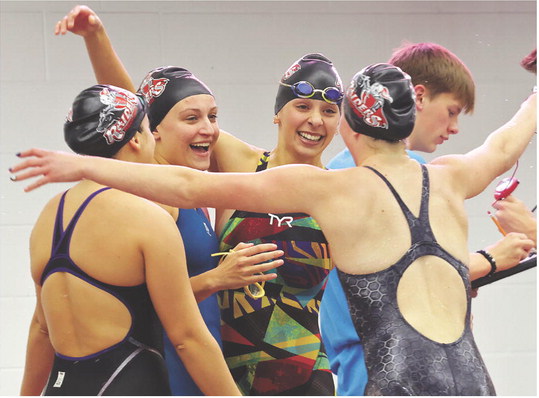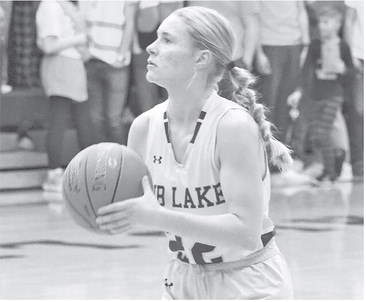Can Wisconsin Badgers bring excitement back to Camp Randall in 2024?
Remember Wisconsin Badgers fans when the start of football season would get you fired up?
Those were great times when you knew the defense would be good, the offensive line would be good, the running backs would succeed and you had a good idea what the depth chart looked like because it was such a consistent recruit-and-develop program that featured most of the state’s top recruits.
Amazing how five years ago can seem so distant.
If you follow the Badgers, or major college football in general, you know times changed rapidly and dramatically in the football world. Major conference realignment shifts, the transfer portal and Name, Image, Likeness (NIL) money have changed the game like nothing else has in such a short amount of time.
Caught in the midst of all the change has been Wisconsin’s program, which has gone from steady contender to an also-ran as it’s gone through coaching changes, scheme changes and, you could argue, an identity crisis as it aims to get away from the grinding, slow-paced brand of football that made it very successful, but also boring to some, most importantly, the talent it aims to recruit.
Second-year head coach Luke Fickell and his staff are, of course, trying to get UW back to where it was and get Camp Randall Stadium back to being the “it” place again. The return of alcohol sales could help in that regard, along with the students getting to the games on time, the university creating an entry system for the students to get there on time and the students actually wanting to be there to make Camp Randall intimidating again and actually give their team a homefield advantage. Not that the half-full student section is a pet peeve of mine or anything. But I digress.
The first year of the Fickell era was, not surprisingly, uneven. There were some ups early, including a dominant offensive outing at Purdue, a come-from-behind win at Illinois driven by back-up quarterback Braedyn Locke and a solid effort in a loss to Ohio State. Injuries were a big factor in a November lull that included embarrassing losses to Indiana and Northwestern. A season-ending win at Minnesota and a strong effort despite a loss to LSU in the Reliaquest Bowl provided some off-season momentum.
Now we sit two weeks from the Aug. 30 season opener against Western Michigan. Most Badger fans, however, are probably thinking more like we’re four weeks away from the Alabama game. That Alabama game on Sept. 14 is one of several on a pretty daunting schedule in the new-look coast-tocoast Big Ten. Who would’ve ever thought you’d say the conference opener is at USC?
Other than money (is there ever any other reason?), I still don’t see why several Big Ten schools, especially in what was the Big Ten West in football, would see advantages in adding USC, UCLA, Washington and Oregon to the conference. At least being in the West gave schools like Wisconsin, Minnesota, Illinois, Purdue and Northwestern a shot to at least think they could reach a Big Ten title game. Now, how are those teams –– and throw in old East teams like Indiana, Rutgers, Maryland and maybe even Michigan State – – ever going to get there? There are no divisions anymore. Now it’s just the best two teams in an 18-team conference playing in the title game. That’s a lot of title hopes gone by Oct. 10 each year. Good luck Rutgers and Indiana!
The expanded 12-team NCAA playoff tournament at least gives the top three or four teams each year something that’s actually more realistic to shoot for. Coming into 2024 unranked, the Badgers have an uphill climb to even be in that conversation.
The good news here is a lot of returning experience on the depth chart, which shouldn’t be a bad thing in the current world of roster upheaval. The devil’s advocate, though, would argue is bringing back the majority of a middle-of-the-pack 7-6 team a good thing?
The Badgers bring back a starting offensive line where all five names are familiar. Chez Mellusi is back for one more go-around at running back. He was playing very well before a season-ending injury last year in late September.
The receiving core has five guys back who at least caught some balls, especially if you include redshirt freshman Trech Kekahuna, who I don’t think I’d ever heard of until he caught a couple passes in the bowl game. Will Pauling is quite good, Bryson Green could be and USC transfer from a year ago C.J. Williams also could be. The top two tight ends are back.
Defensively, there are familiar names at every level, led by outstanding safety and leading tackler Hunter Wohler and cornerback Ricardo Hallman, who picked off seven passes last fall. You have seniors James Thompson and Stratford’s Ben Barten among those back up front. Jake Chaney inside and Darryl Peterson outside are multi-year returners at linebacker. The kickers are all back. Vinny Anthony, who showed quickness and burst, is back to return kicks.
The Badgers did some work in the transfer portal. It remains to be seen how much of an impact those guys can make. Obviously quarterback Tyler Van Dyke, a three-year starter at Miami, will get the most attention. The Badgers seemed to do well with last year’s quarterback transfers. I haven’t given up on Locke and Tanner Mordecai was really good late in the year after having been robbed of his mid-season due to a broken hand.
Van Dyke figures to start over Locke. I can’t say I watched any Miami football the last three years. Internet scouting reports say good, strong arm, good size but questionable decision-making. We’ll see.
The other transfer expected to make an impact is senior running back Tawee Walker, who arrives from Oklahoma. After averaging about 5 yards on his 102 carries last year and scoring seven touchdowns, he’ll likely limit the playing time of holdovers Jackson Acker and Cade Yacamelli.
Much was made of the move to the Air Raid offense coordinated by Phil Longo. We probably never really saw what it’s supposed to look like last year due to it being the first season with the new scheme, Mordecai’s injury and the personnel, namely having a power back like Braelon Allen as your best offensive player until he also got hurt.
The 2023 Badgers just struck me as an OK team that didn’t do anything overwhelmingly well or overwhelmingly bad. The Alabama game in Madison in week three will be a big indicator as to how much UW is improved in year two of the Fickell era. In his previous stint at Cincinnati, the Bearcats went from 48 to 11-2 in year one to year two.
A similar turnaround in Madison for Fickell is going to depend on UW breaking through in big games. You would hope the Badgers beat Western Michigan and South Dakota in weeks one and two. After Alabama, there’s the Big Ten opener at USC, the homecoming game against Penn State on Oct. 26, the game at Iowa the following week, the home game against Oregon on Nov. 16 and the last two rivalry games against Nebraska and Minnesota. You could throw in Oct. 19 at Northwestern too. The first-half “effort” against the Wildcats last year must be atoned for.
UW hasn’t beaten Penn State since 2011. Iowa has physically battered Wisconsin three of the last four years. The Badgers have owned Nebraska, but everyone seems to think the Cornhuskers are on the rise under second-year coach Matt Ruhle. You can’t let them pass you. And, of course, UW must never let the Goofers think they have the upper hand in that rivalry.
It should be an interesting season to watch, especially if they stop playing college football games on Fridays, which UW is ridiculously doing twice this year in its first and last regular-season games.
Matt Frey is the Sports Editor at The Star News.




